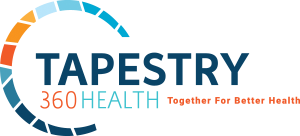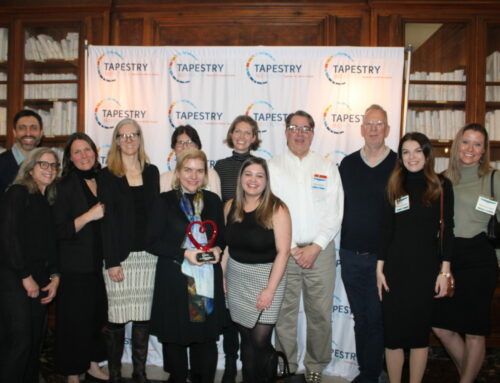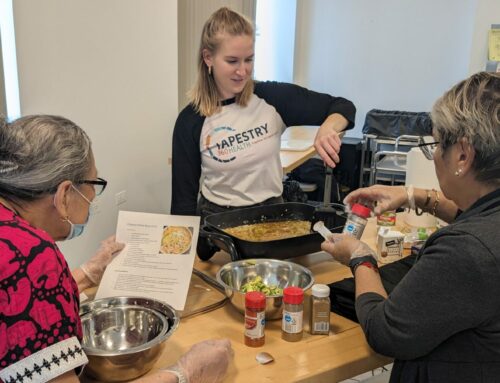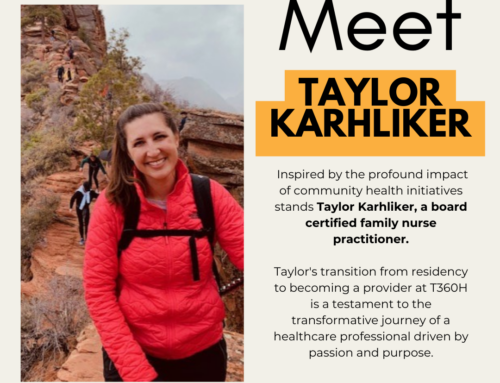News
During Medical Assistant Week, we salute grads of NIMAA partnership program
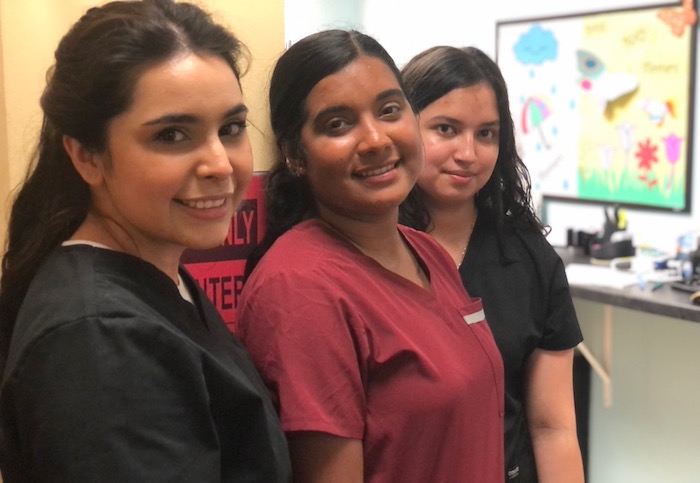
Our first cohort of medical assistant externs completed remote learning & hands-on training over the summer and graduate this week! Here are their stories.
In honor of MA Week, we recognize them, their preceptors, and all our hard-working medical assistants.
Asked to describe what Medical Assistants do, Cathy Cassata of the American Association of Medical Assistants, put it this way:
From the moment patients walk into their physician’s practice, medical assistants have patients’ best interests in mind while performing a wide array of tasks. Their hard work and dedication help make patients’ visits run smoothly and the provider’s day run efficiently.
We couldn’t have said it better! We would just add: to those considering a career in healthcare, medical assisting is growing much faster than average for all occupations, according to the Association of Medical Assistants — please check out our training program, accepting applications now through November 14.
Here are stories our first three externs shared over the summer about how they found their way to the program and what they like about it. All three have completed the NIMAA program at this time–congratulations due to Jasmine Barraza, Dayana Saenz, and Anaïs Vazquez.
Jasmine Barraza
Growing up in Pilsen, Jasmine Barraza attended Benito Juarez High School, where she participated in a nursing program during her final two years. She went on to Malcolm X to study nursing, then took a break from her studies to have twins.
Flash forward a few years and Barraza is ready to get back to her career. Nursing school looked like more of a commitment than she could take on alongside caring for her children. She learned about the NIMAA program from her sister, a medical assistant at another FQHC.
In addition to the fact that the NIMAA program keeps costs low, Barraza likes that she is able to keep her part-time job alongside her studies and her externship. She says the medical assistants at Tapestry Devon, where she did her externship, were welcoming and supportive.
“I say it’s like a family because if something’s going wrong another MA steps up,” Barraza says. “We are all helping each other out.”
Dayana Saenz
When Swedish Hospital went on lockdown, Dayana Saenz was working in the daycare center for hospital workers’ children. The daycare soon closed due to the pandemic.
Saenz expected to be laid off, but hospital managers had different plans: they assigned her to a general labor pool. She went from daycare to helping out in the emergency room and intensive care unit.
“When they said, ‘You’re going to go to the ICU, I didn’t really know what that meant,” she says. Being there at the height of the pandemic–for example, seeing people she had greeted go on respirators–was tough.
“I was like, oh this is a lot,” the Northwest Side native says. But Saenz found she liked the work. She started looking for ways to get training in the health field. Her aunt, herself a medical assistant at Tapestry 360 Health, told her about NIMAA.
“Now I get to be in the room with patients and I’m taking the vitals,” Saenz says. “I want to be a speech pathologist, and this will be a great stepping stone, since it pays better than my daycare job did.”
Saenz likes that Tapestry 360 Health staff made her feel welcome. The program uses a preceptor model where she learns from current medical assistants and others at Tapestry Lincoln Square, where she is doing her externship. They help her learn, she says: “My preceptors made it easy for me to go in and ask questions.”
Saenz also appreciates that as an FQHC, Tapestry 360 Health provides access to many who could not afford quality care otherwise. “It’s nice to know that [Tapestry 360 Health serves everyone] and [patients] don’t have to worry ‘how am I going to pay this off?’” Saenz says. “I didn’t realize how many resources a community has until I started working with Tapestry 360 Health.”
Anaïs Vazquez
Tapestry 360 Health NIMAA student Anaïs Vazquez has wanted to work in the medical field since she was a child. “When I was little I would play doctor with my mom when she got sick,” she says.
When Vazquez was in seventh grade, her mom was diagnosed with pancreatitis. The South Austin native went to Pritzker College Prep for high school while helping take care of her siblings and around the house.
She enrolled at St. Xavier University to study nursing and play soccer, then continued her studies at several other local schools, but finances were preventing her from completing her degree.
“I was scrolling through social media and saw NIMAA on Instagram,” she says. She started in early 2021 and did her externship at Tapestry Wilson while studying.
Vazquez likes the combination of remote courses and hands-on education–especially working with patients. “Learning to be a medical assistant is helping me outgrow my social anxiety,” she says. “I was shy, and now I’m like OK, I can do this.”
Photo: Dayana Saenz, Anaïs Vazquez, and Jasmine Barraza are our first cohort of NIMAA graduates
Our first cohort of medical assistant externs completed remote learning & hands-on training over the summer and graduate this week! Here are their stories.
In honor of MA Week, we recognize them, their preceptors, and all our hard-working medical assistants.
Asked to describe what Medical Assistants do, Cathy Cassata of the American Association of Medical Assistants, put it this way:
From the moment patients walk into their physician’s practice, medical assistants have patients’ best interests in mind while performing a wide array of tasks. Their hard work and dedication help make patients’ visits run smoothly and the provider’s day run efficiently.
We couldn’t have said it better! We would just add: to those considering a career in healthcare, medical assisting is growing much faster than average for all occupations, according to the Association of Medical Assistants — please check out our training program, accepting applications now through November 14.
Here are stories our first three externs shared over the summer about how they found their way to the program and what they like about it. All three have completed the NIMAA program at this time–congratulations due to Jasmine Barraza, Dayana Saenz, and Anaïs Vazquez.
Jasmine Barraza
Growing up in Pilsen, Jasmine Barraza attended Benito Juarez High School, where she participated in a nursing program during her final two years. She went on to Malcolm X to study nursing, then took a break from her studies to have twins.
Flash forward a few years and Barraza is ready to get back to her career. Nursing school looked like more of a commitment than she could take on alongside caring for her children. She learned about the NIMAA program from her sister, a medical assistant at another FQHC.
In addition to the fact that the NIMAA program keeps costs low, Barraza likes that she is able to keep her part-time job alongside her studies and her externship. She says the medical assistants at Tapestry Devon, where she did her externship, were welcoming and supportive.
“I say it’s like a family because if something’s going wrong another MA steps up,” Barraza says. “We are all helping each other out.”
Dayana Saenz
When Swedish Hospital went on lockdown, Dayana Saenz was working in the daycare center for hospital workers’ children. The daycare soon closed due to the pandemic.
Saenz expected to be laid off, but hospital managers had different plans: they assigned her to a general labor pool. She went from daycare to helping out in the emergency room and intensive care unit.
“When they said, ‘You’re going to go to the ICU, I didn’t really know what that meant,” she says. Being there at the height of the pandemic–for example, seeing people she had greeted go on respirators–was tough.
“I was like, oh this is a lot,” the Northwest Side native says. But Saenz found she liked the work. She started looking for ways to get training in the health field. Her aunt, herself a medical assistant at Tapestry 360 Health, told her about NIMAA.
“Now I get to be in the room with patients and I’m taking the vitals,” Saenz says. “I want to be a speech pathologist, and this will be a great stepping stone, since it pays better than my daycare job did.”
Saenz likes that Tapestry 360 Health staff made her feel welcome. The program uses a preceptor model where she learns from current medical assistants and others at Tapestry Lincoln Square, where she is doing her externship. They help her learn, she says: “My preceptors made it easy for me to go in and ask questions.”
Saenz also appreciates that as an FQHC, Tapestry 360 Health provides access to many who could not afford quality care otherwise. “It’s nice to know that [Tapestry 360 Health serves everyone] and [patients] don’t have to worry ‘how am I going to pay this off?’” Saenz says. “I didn’t realize how many resources a community has until I started working with Tapestry 360 Health.”
Anaïs Vazquez
Tapestry 360 Health NIMAA student Anaïs Vazquez has wanted to work in the medical field since she was a child. “When I was little I would play doctor with my mom when she got sick,” she says.
When Vazquez was in seventh grade, her mom was diagnosed with pancreatitis. The South Austin native went to Pritzker College Prep for high school while helping take care of her siblings and around the house.
She enrolled at St. Xavier University to study nursing and play soccer, then continued her studies at several other local schools, but finances were preventing her from completing her degree.
“I was scrolling through social media and saw NIMAA on Instagram,” she says. She started in early 2021 and did her externship at Tapestry Wilson while studying.
Vazquez likes the combination of remote courses and hands-on education–especially working with patients. “Learning to be a medical assistant is helping me outgrow my social anxiety,” she says. “I was shy, and now I’m like OK, I can do this.”
Photo: Dayana Saenz, Anaïs Vazquez, and Jasmine Barraza are our first cohort of NIMAA graduates
